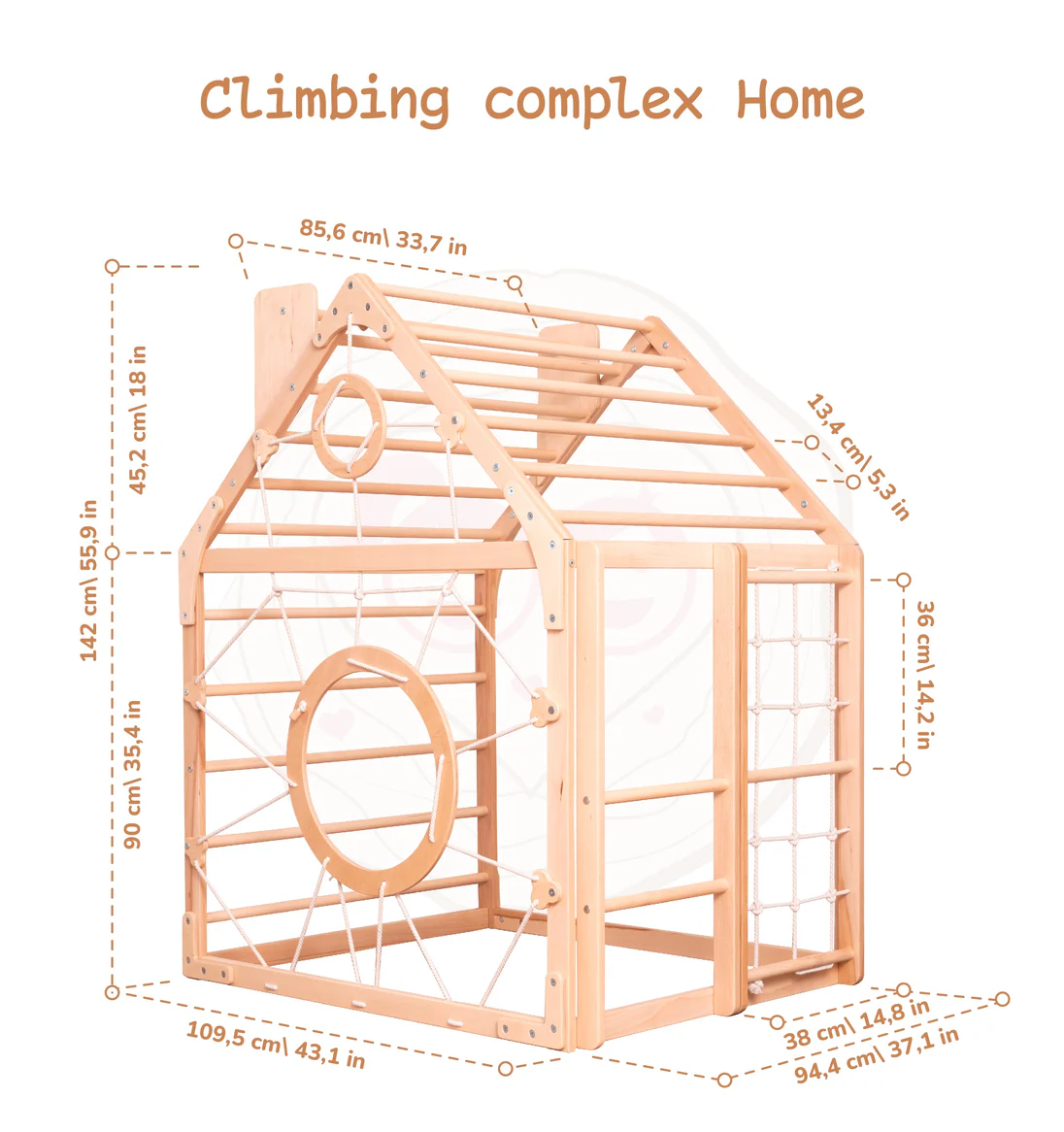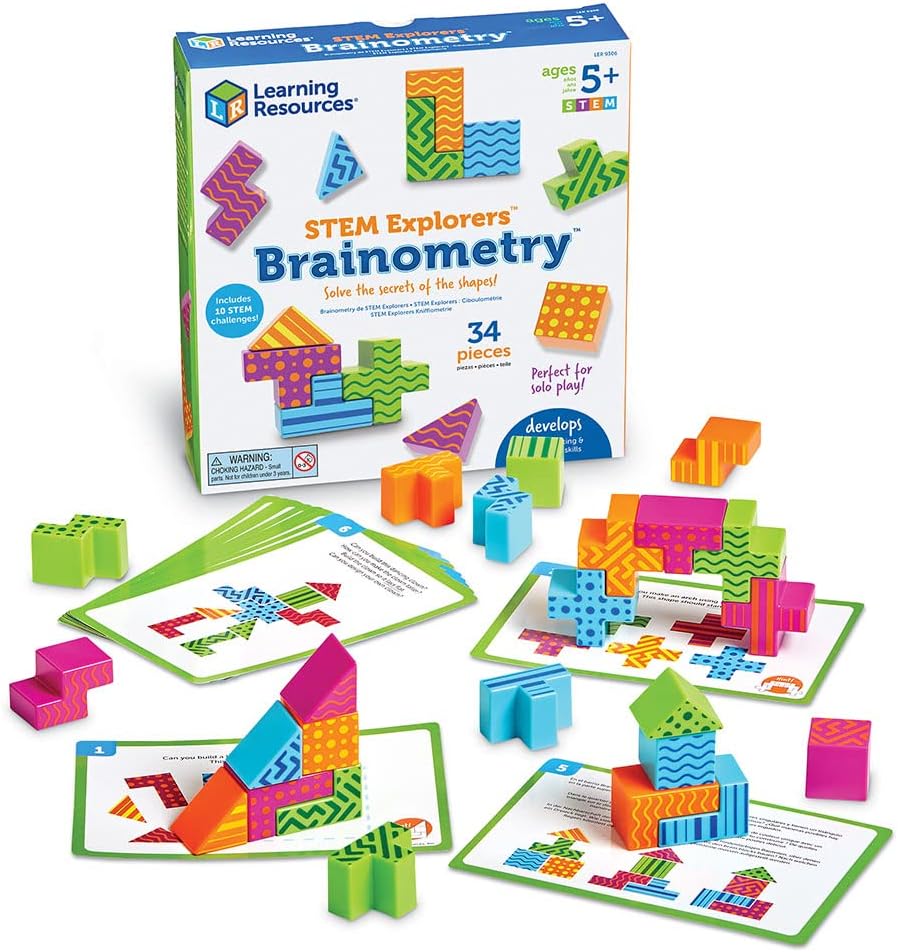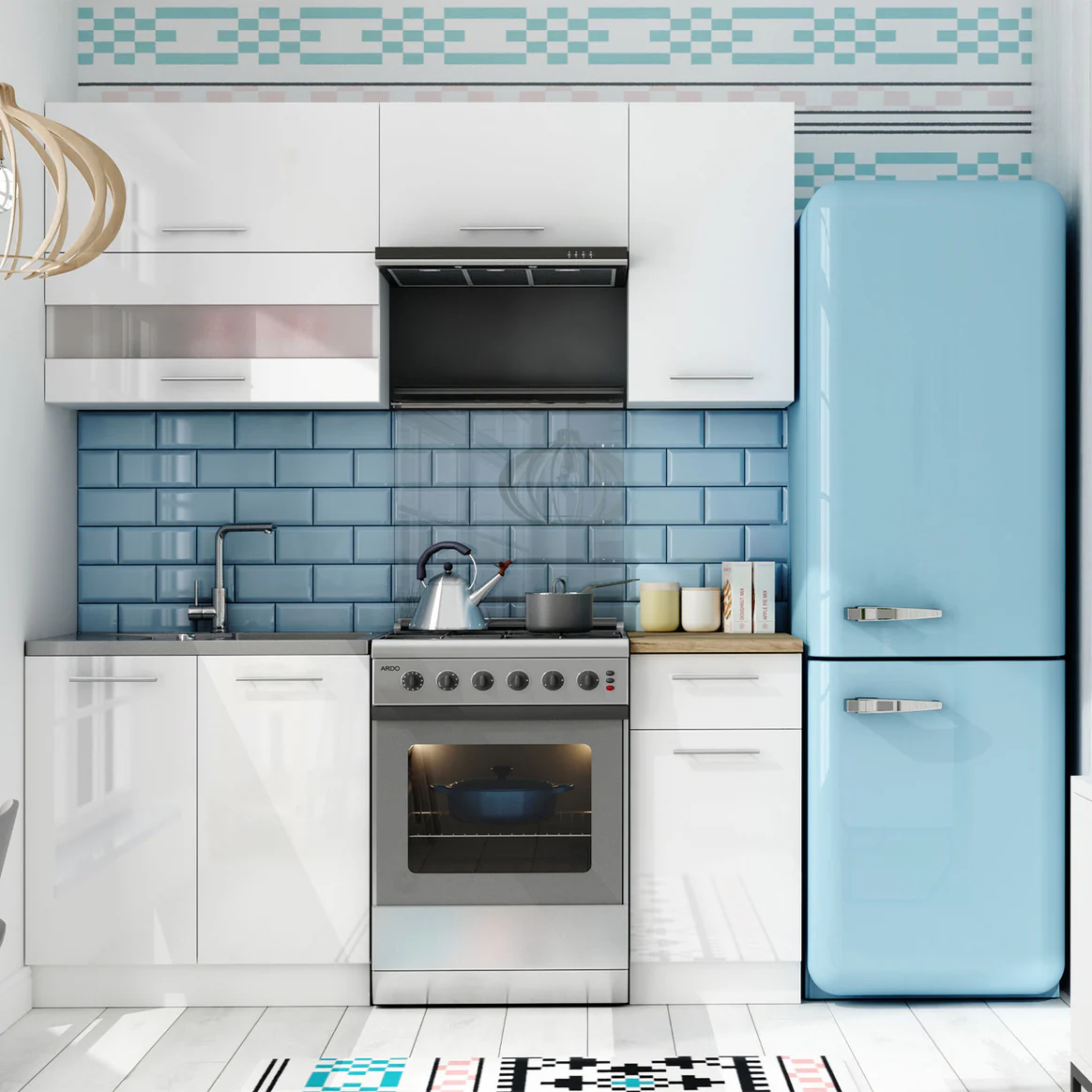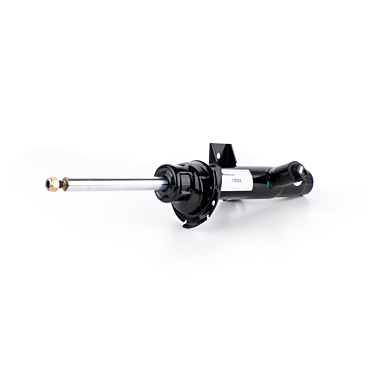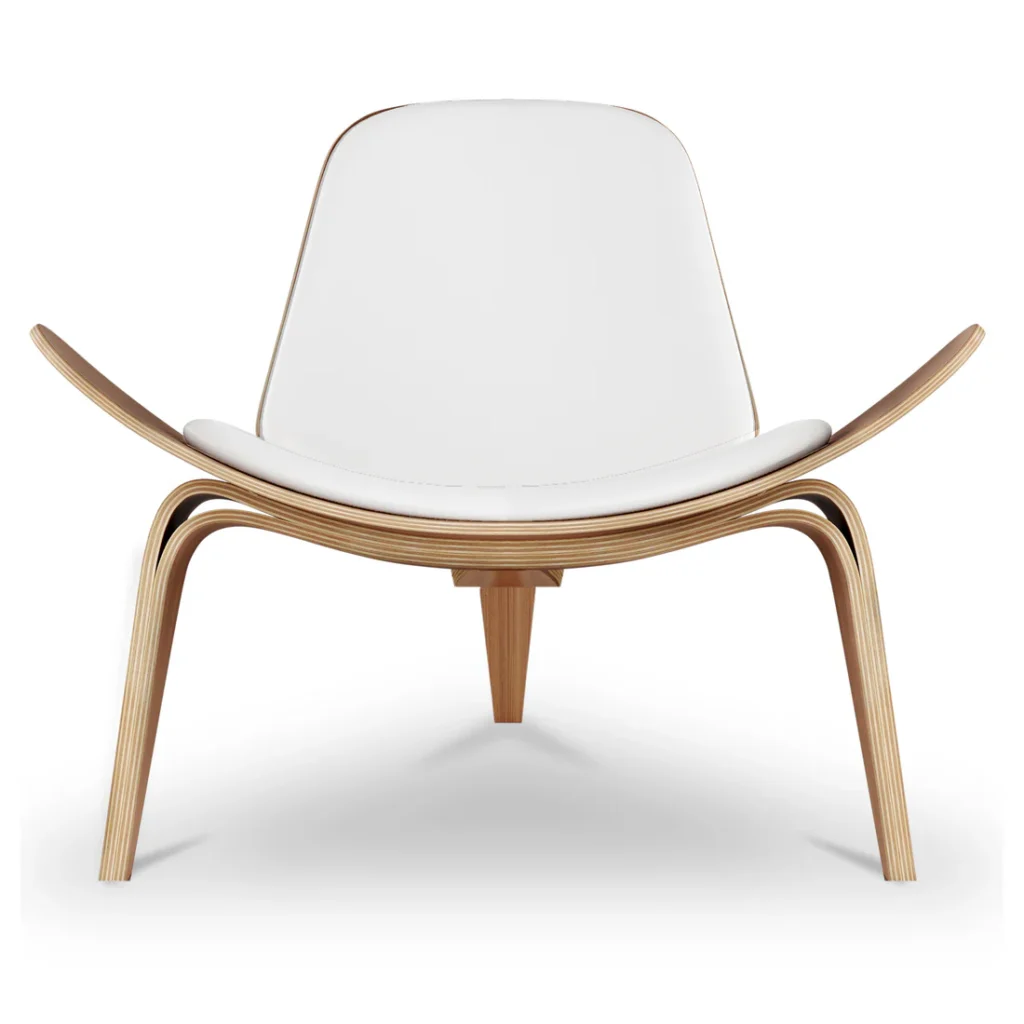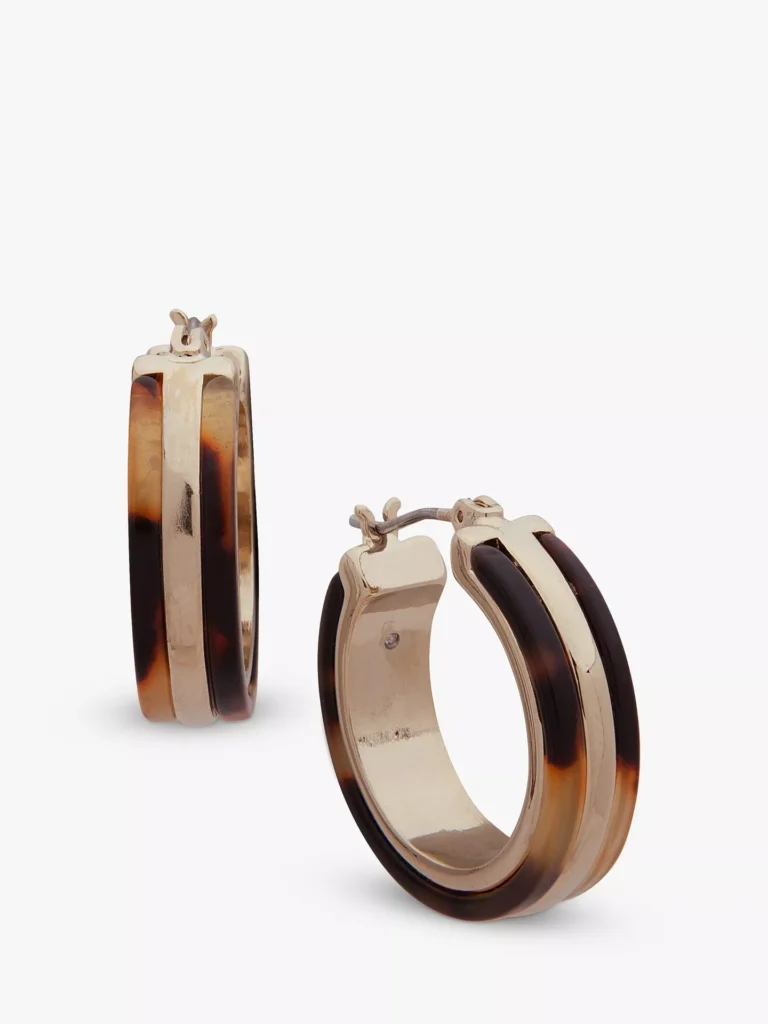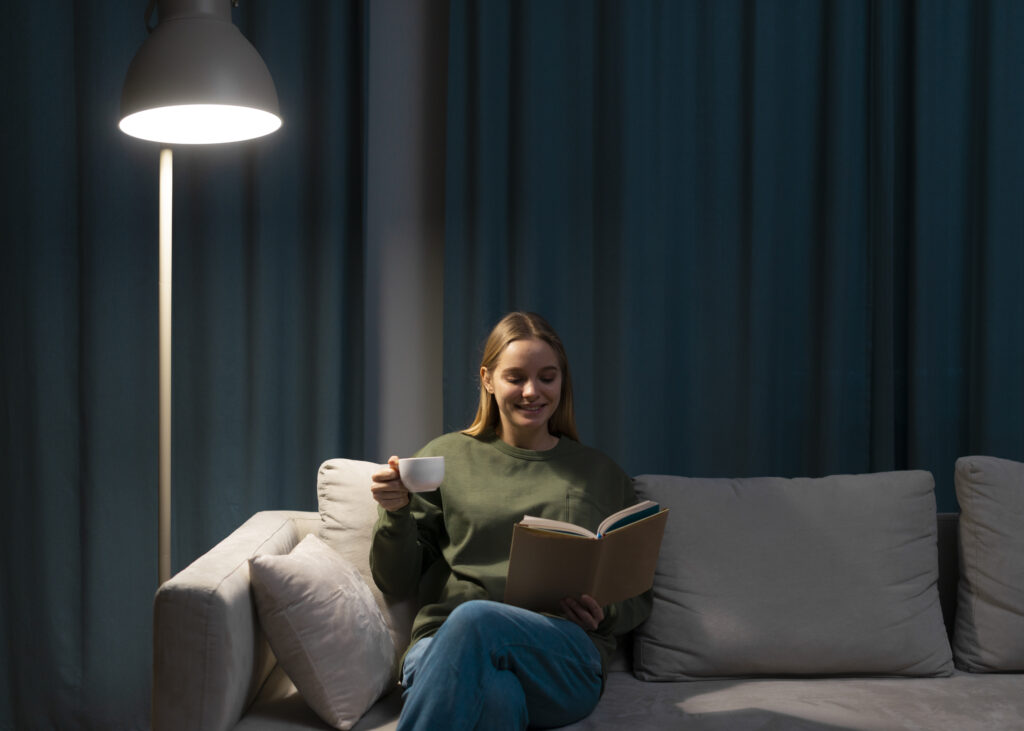The best playthings don’t just entertain; they unlock something—courage in cautious climbers, focus in busy minds, and quiet pride in “I did it myself.” The Wooden Climbing Playhouse is that kind of catalyst. It folds the magic of a backyard fort and a kid-sized climbing gym into one sculptural piece that actually looks good in your home. Low heights invite little legs to try, grippy wood steadies wobbly steps, and the open design keeps you close without hovering. What starts as a climb becomes a slide, a tunnel, a pirate ship, a reading nook—because children are natural directors when you give them a versatile stage.
In this article, we’ll help you make the most of the Wooden Climbing Playhouse—from room placement and simple add-ons to play prompts that nurture balance, core strength, language, and problem-solving. We’ll weave in safety and supervision habits that lower your stress, quick cleaning routines, and storage ideas that won’t consume your weekend. Think of this as your “set it once, enjoy it daily” guide.
Shop the Wooden Climbing Playhouse
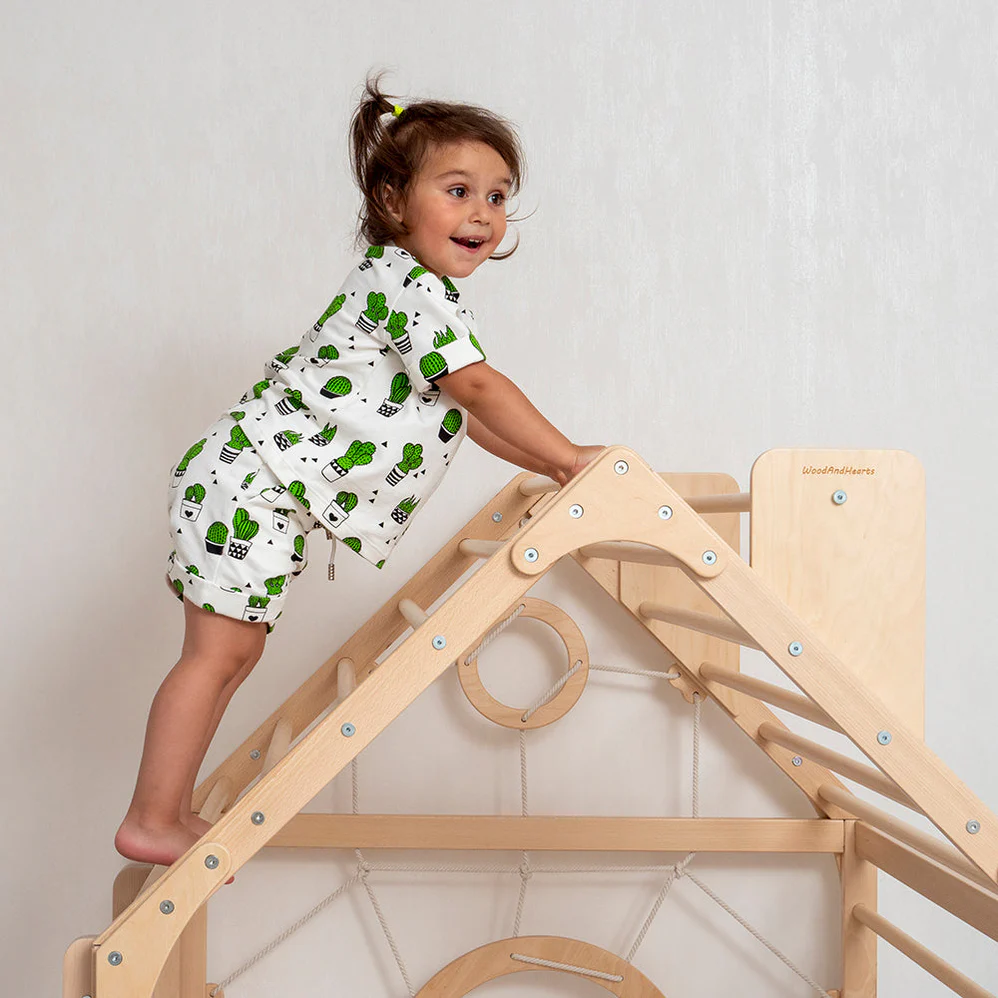
Why this playhouse earns its floor space
A good climbing structure is a gym without the gym vibes. The Wooden Climbing Playhouse blends gentle angles with reachable grips, so toddlers and preschoolers can test balance, cross midline, and coordinate hands and feet safely. The wood surface offers tactile feedback that soft plastics can’t—kids feel secure, so they attempt “one more rung,” the moment where skill growth actually happens. Because it’s open on all sides, siblings can play cooperatively (one climbs, one narrates, another hands up plush “supplies”), and you can monitor from any angle without interrupting the flow.
It’s more than gross motor, too. The frame is a prop master: drape a sheet and you’ve built a book cave; add a scarf and suddenly it’s a theater curtain. With a few soft accessories, the same piece hosts quiet time, imaginative storytelling, and collaborative problem-solving—key ingredients for self-directed play that lasts longer than five minutes.
Set it up once, enjoy it daily
Start with placement. Aim for a corner with natural light and soft flooring (a rug or foam mat) that gives you a clean “runway” around the structure. Keep a clear zone about an arm’s length on each side so falls are short and predictable. Orient the entrance toward the part of the room you use most; proximity invites frequent, casual play.
Keep a small basket nearby with “scene changers”: two play silks, a fitted sheet for forts, a few chunky cars, a handful of animal figures, and a favorite plush. That’s enough to rotate the story without clutter. If space is tight, slide a flat cushion or foldable mat under the playhouse when not in action; pull it out for higher-energy sessions.
Shop the Wooden Climbing Playhouse
Play ideas that build real-world skills
Think simple prompts, not scripted games. Children will take it from there.
- “Mountain rescue”: Place two stuffed animals on different levels. Invite your child to “rescue” them by planning a route. You’ll see problem-solving, sequencing, and grip strength without a single worksheet.
- “Bridge & boats”: A scarf becomes a river under the frame; cars or small boats “float” while your climber crosses the bridge. This adds imaginative play and dynamic balance.
- “Color missions”: Tape three colored dots to different rungs. Call out a color order—red, blue, yellow—and let your child tag them in sequence. That’s working memory and cross-body coordination wrapped in a giggle.
- “Quiet cave”: Drape a sheet over the top and slide in a pillow and a few books. Even energetic kids need nervous-system calm; the same structure transitions to stillness beautifully.
If siblings are involved, assign roles: climber, spotter, storyteller. Rotating jobs keeps the play cooperative and extends the session naturally.
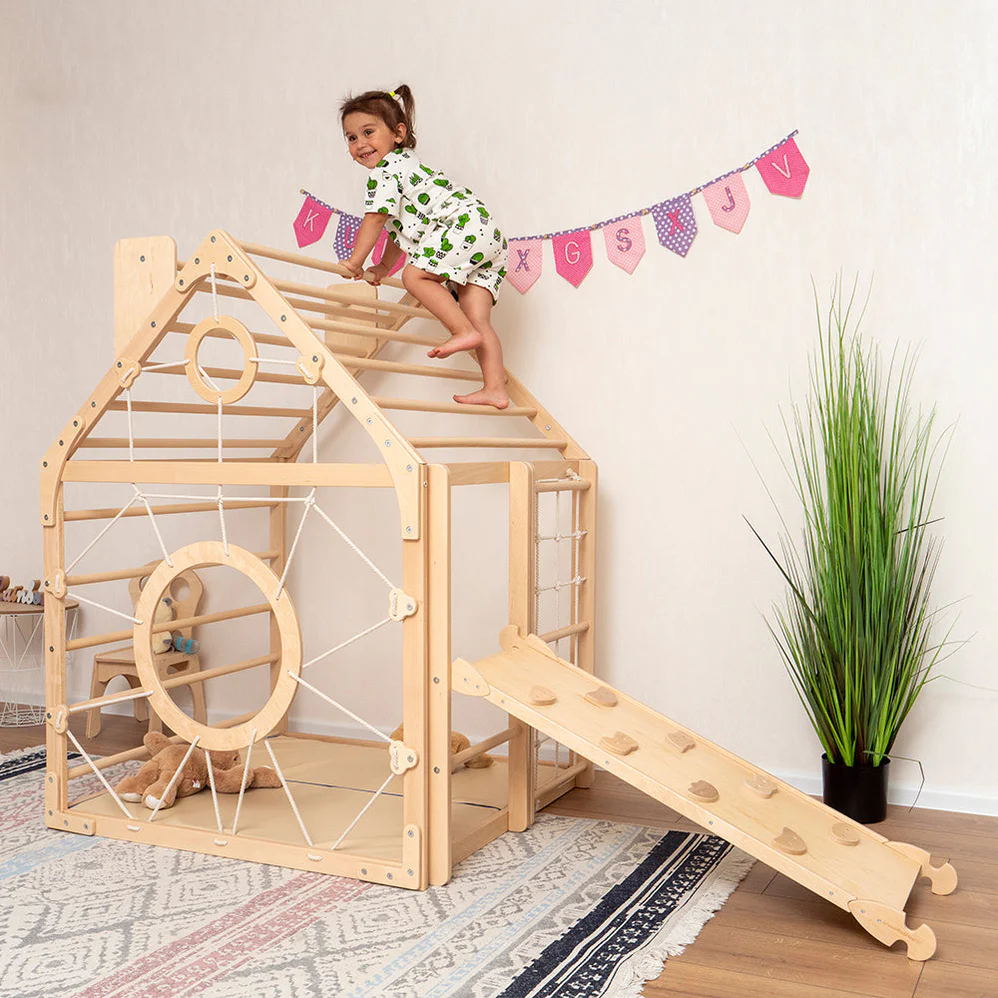
Safety that supports confidence
A confident climber is a safer climber. Stay present within arm’s reach for younger kids, but let them test their ideas before stepping in. Offer language like, “Find your next safe step,” or “Check with your toes,” which cues body awareness rather than fear. Keep the floor clear of hard toys, and teach a simple rule: one climber per side, feet first on descents.
Regularly do a quick “hand-check” pass—run your palm along the rungs to spot crumbs or sticky spots that could affect grip. If you move the structure between rooms, recheck the ground for slipping hazards. And model pauses: place a hand, look, then step. They imitate what you do more than what you say.
Clean, care, and keep it lovely
Wood shines with light, frequent care. Wipe down high-touch areas with a damp cloth and mild soap; dry immediately so moisture doesn’t linger on the grain. Avoid harsh chemicals and abrasive scrubbers that can glaze the surface. Every few weeks, give a slightly deeper clean and rotate the playhouse 90 degrees; new orientation equals new curiosity.
Scuffs happen—celebrate them as “play memories,” but if one bothers you, a quick buff with a soft cloth usually softens the look. If you use mats beneath, vacuum under them occasionally; a clean landing zone is part of safe play.
Shop the Wooden Climbing Playhouse
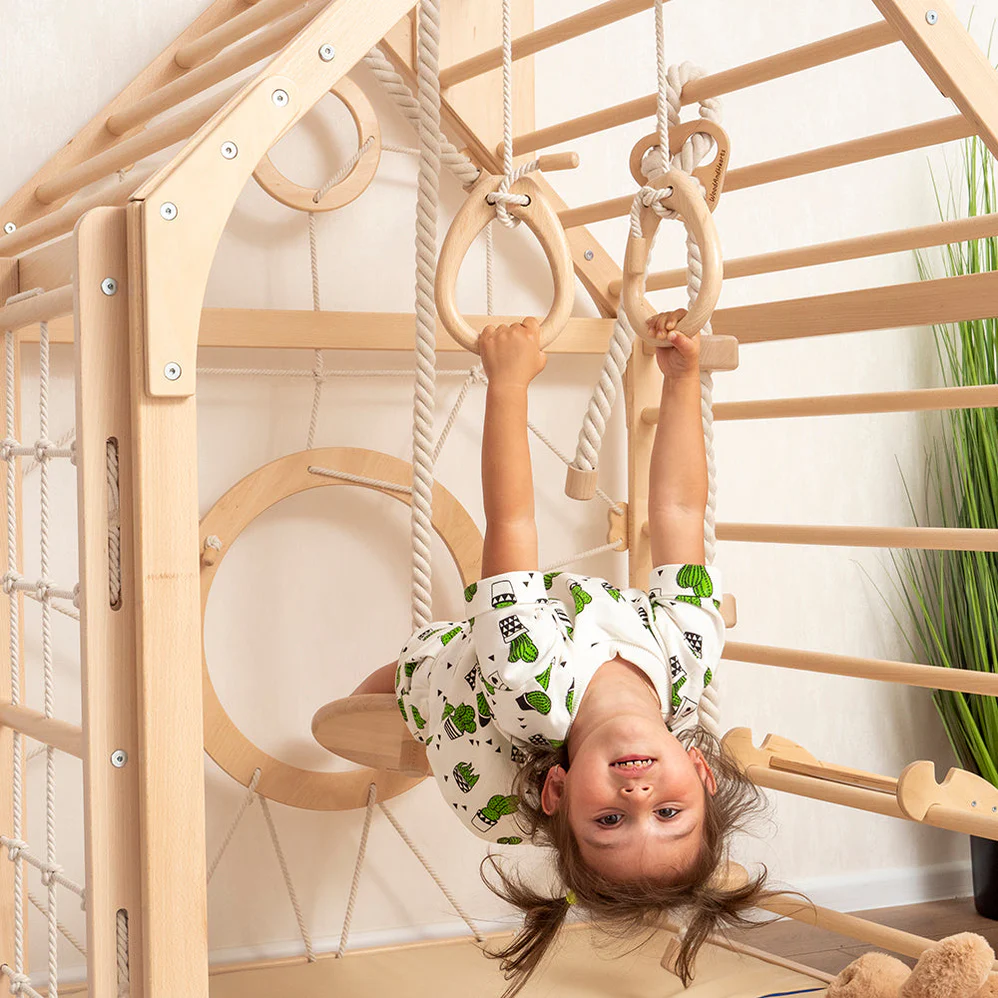
Grow the play as they grow
The Wooden Climbing Playhouse scales with experience. Early on, touches and knee-steps count as victories. Later, kids will invent sequences—up, across, down, through—turning movement into choreography. Add a simple routine soundtrack once in a while; music nudges rhythm and endurance. For older preschoolers, layer in storytelling: “We’re exploring a jungle temple. What tools do we need?” Suddenly the climb serves a narrative, giving purpose to movement and language equal footing.
When friends visit, the playhouse becomes a social lab: turn-taking (“your climb, my climb”), shared plans (“you be the captain, I’ll be the navigator”), and low-stakes negotiation (“let’s add the scarf river after we build the bridge”). These tiny collaborations are how kindergarten-ready skills form—gently, through joy.
When space is shared
If the playhouse lives in a family room, style it. A neutral mat, a woven basket for the add-ons, and one color palette for textiles (think oat, sage, denim) help it read like furniture, not clutter. Teach a quick reset: fold the sheet, tuck the silks, park the cars. Two minutes is all it takes to restore calm when the day pivots to dinner.
Conclusion
A beautiful play space isn’t about stuffing a room with toys—it’s about choosing one or two anchors that invite deep, repeatable play. The Wooden Climbing Playhouse is that anchor. It encourages brave bodies, flexible minds, gentle social skills, and quieter afternoons afterward because movement regulates everything. Set it near the action, keep a few scene-changers close, and let your child lead. You’ll get long, self-directed sessions that feel like play to them and progress to you—exactly the kind of “win-win” homes are built for.
Shop the Wooden Climbing Playhouse
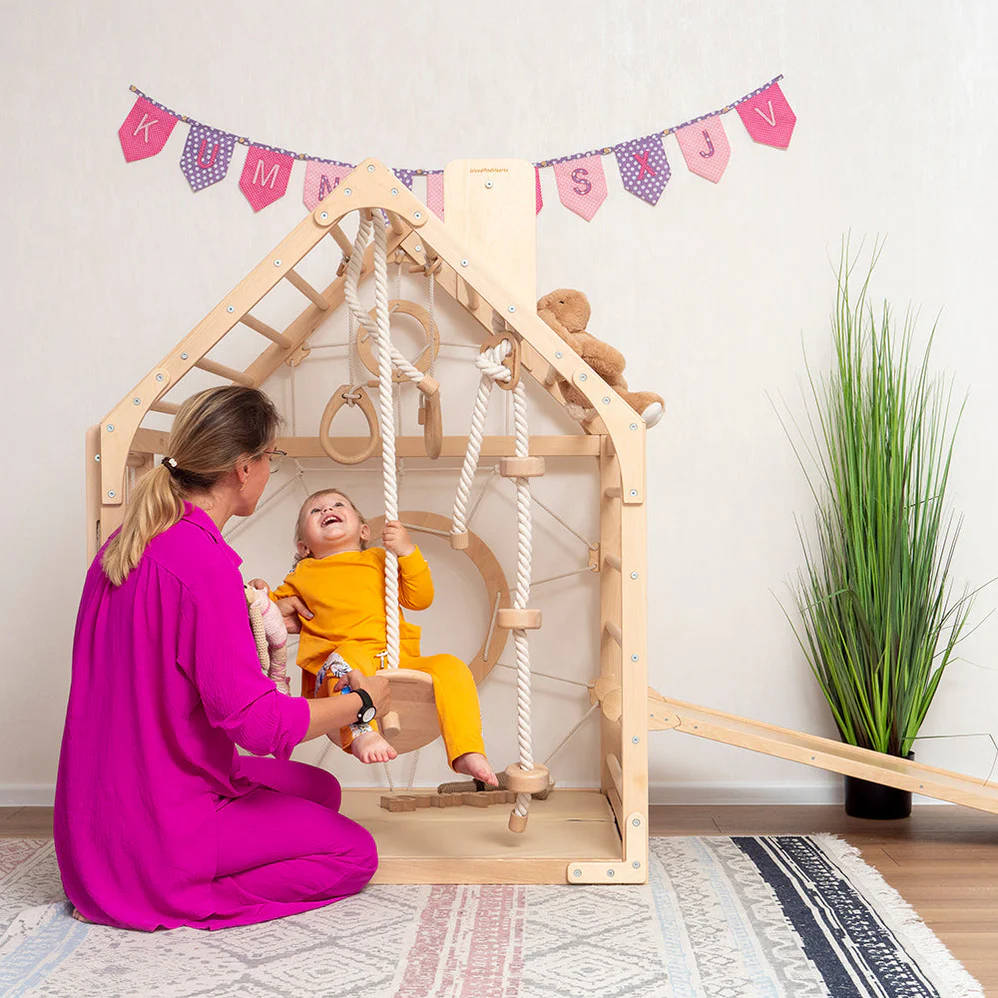
FAQ
- What age is the playhouse best for?
It shines from confident crawling through early primary years; adjust supervision and play prompts to your child’s stage. - How do I make it safe on hard floors?
Place a rug or foam mat beneath and keep a clear perimeter. Check the landing zones daily. - Won’t kids get bored of one structure?
Rotate simple add-ons—sheet, scarves, cars—and change orientation. New angles equal new ideas. - How much should I spot my toddler?
Stay within arm’s reach and coach with calm cues (“look for your next step”) rather than lifting unless necessary. - Can siblings of different ages use it together?
Yes—set ground rules (one per side), assign roles, and let the older child model safe sequences. - What if my child is hesitant to climb?
Start at ground level: crawling through, tapping rungs, playing “mail slot” with scarves. Confidence comes before height. - How do I clean it without damaging the wood?
Mild soap, damp cloth, dry immediately. Skip harsh chemicals and abrasives. - Any quick play prompts for busy days?
Color tag (touch red-blue-yellow), animal rescue, bridge-and-boats. Two minutes of setup, twenty minutes of play. - Can it double as a quiet space?
Absolutely—drape a sheet, add a pillow and two books. The same frame supports nervous-system calm. - How do I keep the room from looking messy?
Use one basket for accessories, one neutral mat, and a 2-minute reset routine: fold, tuck, park—done.

